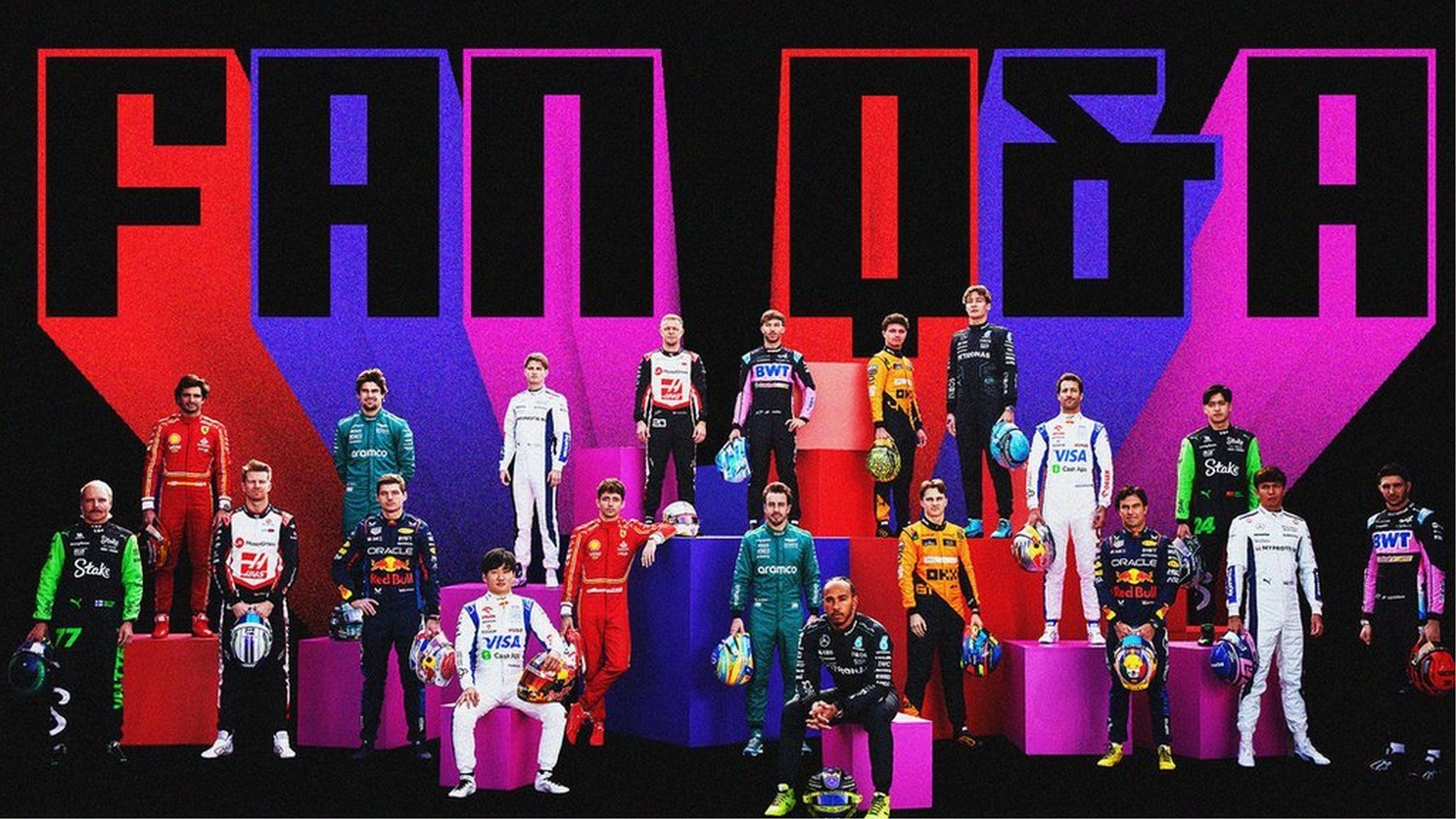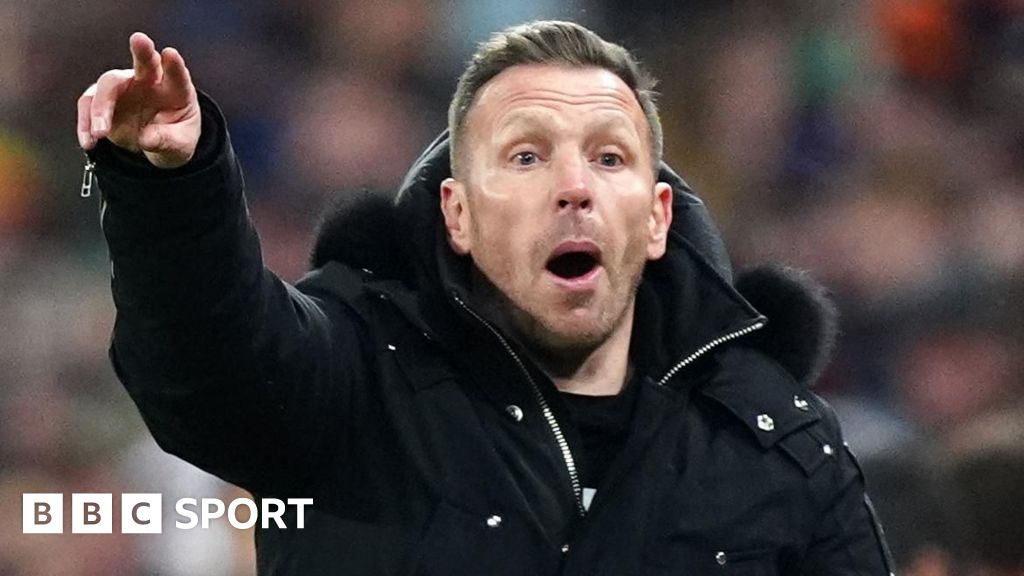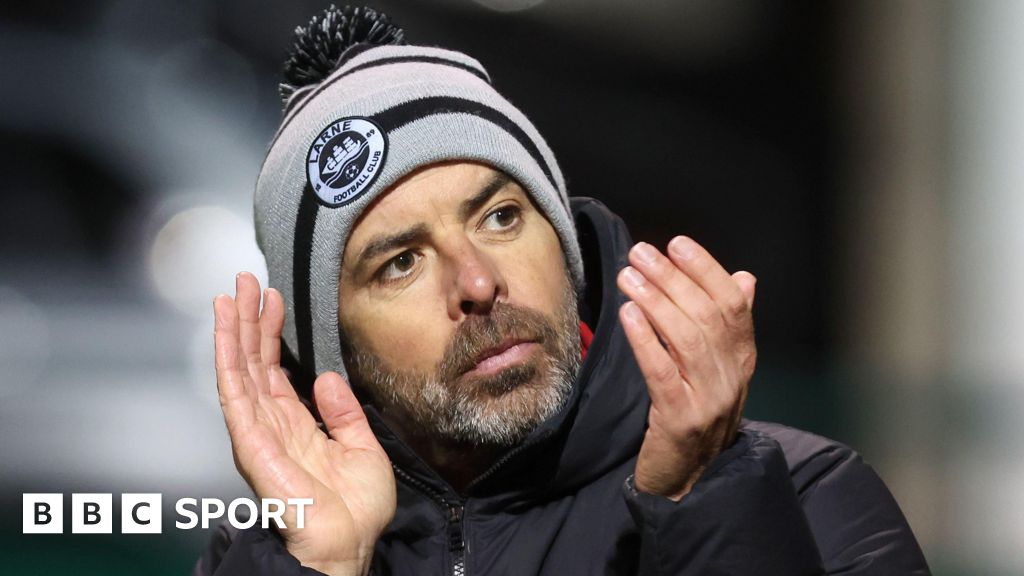ARTICLE AD BOX

Ferrari's Charles Leclerc won his home race in controlled fashion after a lap-one crash on Sunday.
Victory at Monaco means Leclerc is 31 points behind three-time world champion Max Verstappen at the top of the drivers' standings.
F1 correspondent Andrew Benson answers your questions after the Monaco Grand Prix.
Will Ferrari and McLaren be able to mount a title challenge this year or are Red Bull still the favourites? – Avinash
Ferrari’s Charles Leclerc cut Max Verstappen’s championship lead to 31 points by winning in Monaco as the Red Bull driver finished sixth.
And after seven races, Verstappen has won four, Ferrari two and McLaren one. The season is already proving a great deal more competitive than many expected.
On top of that, recent races have given the impression that Ferrari and McLaren, in particular, are beginning to close in on Red Bull - as are Mercedes, albeit from a little further behind.
Verstappen himself summed up his and Red Bull’s troubles in Monaco, where the track layout was not suited to their car, by saying the car’s weaknesses had been hidden for the past two years by a fundamental performance advantage.
“With everybody closing up,” he said, “which is the reality, then you cannot hide any more and you get found out.”
But the Red Bull is still the car to beat, and Leclerc started the weekend by pointing out that the fluctuating gap might be down to the specifics of individual circuits.
“I don't want to kill the excitement,” Leclerc said, “but I wouldn’t jump to conclusions too early. I mean, the last race (Imola) was pretty close, the one before (Miami) as well. It was two particular tracks.
“It is also true that the two next tracks are also quite particular - Monaco and Canada, where kerb-riding is so important. And it might not show the strength of (the Red Bull) car. So I think we've got to wait a little bit more to try and understand exactly where we are in terms of performance.”
Do you think the Monaco Grand Prix should continue? It’s impossible to overtake and it’s turning into a boring procession each year – Andy
Every time Monaco comes around, these sort of questions get asked - people question whether the circuit should be changed to provide a better overtaking opportunity; they say the cars have become too big and heavy, which makes it worse.
The fact is, though, that overtaking has always been difficult at Monaco. I’m not convinced it has got especially harder over the past 40 years or more - whether the cars were 210cm wide, as they were in the early ‘90s, 180cm wide as they were from 1998, or 200cm as they have been since 2017.
There have been many races where faster cars have been stuck for many, many laps behind slower ones without being able to get past. Alain Prost in the dominant McLaren-Honda in 1988 behind Gerhard Berger’s Ferrari and David Coulthard’s McLaren behind Enrique Bernoulli’s Arrows in 2001 come to mind.
The sheer size of the modern cars - they are also very long - does not help, of course, in terms of manoeuvrability.
Bar a couple of detail changes - the addition of the Swimming Pool section in the early 1970s, and the tightening of the harbour chicane in 1996 - the Monaco track has been essentially the same since the race started back in 1929. That is an undeniable part of its appeal.
Most people in F1 would agree it would be wrong to change the character of the track too much.
Perhaps the run through the tunnel could be lengthened, though.
One idea I have heard being discussed is to cut left before Portier, and then rejoin the road leading to the tunnel a bit further east, to make the braking zone for the chicane a little longer.
I’ve been impressed with Oscar Piastri’s pace the last few weekends. Do you see him winning a race this year and becoming a regular winner? – Steven
Piastri is the real deal, there is little doubt about that. Sometimes, such as when he qualified and finished second at Monaco last weekend, it is easy to forget that he is in only his second season in F1.
He has a tough yardstick at McLaren in Lando Norris, and the two are very closely matched. On balance, Norris has had the edge so far, but only by a bit.
McLaren rate Piastri highly - after all, they moved to extend his contract to the end of 2026 after he had done just half his first season last year.
He is quick - and especially so in fast corners, where Norris admits Piastri often has the edge - as well as remarkably composed and calm. Nothing seems to faze him.
Piastri is already a winner in F1 - in the sprint in Qatar last year. If McLaren continue their current trajectory, it is highly likely he will win a grand prix this year. And in the right car, he is more than good enough to be a regular winner.
Should Red Bull be worried about their form lately? Is it more on their competitors' development curve or a track-specific thing? – Juha
It’s a combination of both. The Red Bull remains a great car, but ever since the start of the ground-effect era, it has had a weakness. It is not great on bumpy tracks with predominantly slow corners that require a lot of kerb riding.
The belief is that this is because it works at its aerodynamic optimum with a low front ride-height. This gives a double loss on these sort of tracks - because the car needs to be run higher, it loses downforce and therefore performance; and having to run it stiff means it loses out from a lack of compliance over bumps and kerbs.
The Ferrari, by contrast, is designed to run at a higher front ride-height. That means it is naturally more competitive on slow corners, where the ride height is automatically higher because of reduced loads on the car. That keeps more of its performance when it has to be run higher; and it can be run softer without losing as much.
So, Red Bull will be more competitive again on circuits that don’t have these characteristics - and there are plenty coming up through the European summer where they can be expected to be formidable.
At the same time, McLaren have definitely made a step forward. The impact of Ferrari’s Imola upgrade is yet to be established fully. And Mercedes believe they, too, have significant steps in the pipeline.
What would Yuki Tsunoda have to do to get a seat at the main Red Bull team? He has been beating his team-mates consistently for a while now – Adam
The impression from the outside is that there is absolutely nothing Tsunoda can do to be considered for a seat at Red Bull - the bosses simply do not rate him highly enough.
This is why Tsunoda is looking outside Red Bull for job opportunities, even though he owes his seat in F1 to Honda, their engine partner.
Ironically, he cannot get a seat at Aston Martin, which will be Honda’s works team from 2026, because Fernando Alonso has just signed a new contract there and Lance Stroll is the son of the owner and is not going anywhere.
So, Tsunoda is looking at places such as Williams, Haas and Alpine, and it seems he has a decent chance of landing one of those seats in this summer’s driver musical chairs.
As for his performance at RB, yes, he is beating Daniel Ricciardo regularly and has put in some impressive drives this year. But this is raising more questions about Ricciardo than it is changing minds at Red Bull about Tsunoda.
At the moment, though, Ricciardo is protected by team principal Christian Horner, sources say, and is safe for now from being replaced by reserve Liam Lawson.
Motorsport adviser Helmut Marko, who would probably like to promote Lawson, has lost power and influence in the internal civil war at Red Bull that was laid bare by the allegations of sexual harassment and coercive, controlling behaviour made against Horner by a female employee, which Horner denies, and which an internal investigation dismissed.
It is not hard to imagine a Lawson and Ricciardo line-up at RB in 2025, though, if Horner does not shift his stance and Tsunoda moves elsewhere.
Surely fans, teams and drivers alike all recognise now that the cars should be lighter and smaller? Is this part of the 2026 rule changes? - John
The drivers have been saying this for a while. But it is actually harder than you might imagine to make the cars much smaller and lighter.
There was an attempt to reduce their size and weight for 2026, but it does not look as if there is going to be a significant difference.
One idea had been to reduce wheel sizes to 16 inches - because the 18-inch wheels introduced in 2022 have added quite a lot of weight.
But tyre supplier Pirelli pushed back against that and now the 18-inch wheels are staying.
There is actually a bit of a misunderstanding about the causes of the increased weight.
Many blame the hybrid engines, but this is not really accurate. They are heavier than the old naturally aspirated ones - especially because of the batteries.
But they need a lot less fuel - the naturally aspirated 2.4-litre V8s used until 2013 would start grands prix with close to 100kg more fuel than the current cars. And that would also require a larger fuel tank, of course, which would mean a bigger and heavier chassis.
This is one reason why suggestions that the sport might consider returning to these types of engines but using sustainable fuel from 2030 - an idea F1 chairman Stefano Domenicali recently floated - seem a little misguided to some.
And that is without even considering the optics of abandoning fuel-efficient, hybrid engines in a global climate crisis.
Most of the additional weight in the cars is accounted for by improved safety features. These include the halo, the highly successful cockpit head-protection device which has already saved several lives. And the strength required to be built in to pass more stringent impact tests.
And of course no-one wants weight to be reduced if it means safety also takes a hit.

 5 months ago
43
5 months ago
43








 English (US)
English (US)